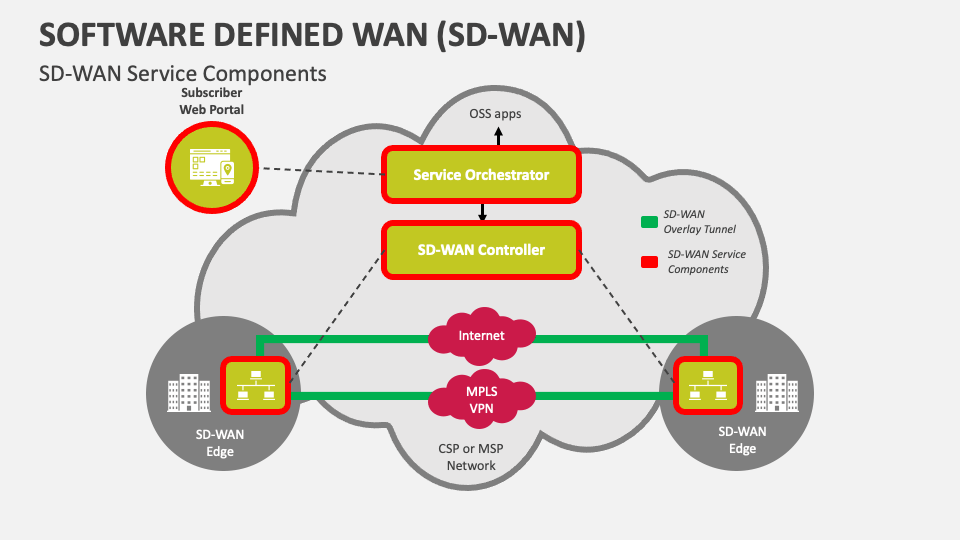Contents
In today’s interconnected world, where businesses rely heavily on seamless connectivity for their operations, the choice between SD-WAN Services and Traditional Networks has become increasingly pivotal. This article delves into the fundamental differences between the two, shedding light on how SD-WAN Services are revolutionizing network management and why businesses are increasingly adopting this innovative approach.
SD-WAN Services: The Game-Changer in Connectivity
Definition and Functionality: SD-WAN (Software-Defined Wide Area Network) Services represent a paradigm shift in network architecture. Unlike Traditional Networks, which rely on hardware-based infrastructure and manual configuration, SD-WAN leverages software-defined technology to dynamically manage and optimize network traffic.
Benefits of SD-WAN Services:
- Enhanced Flexibility and Scalability: SD-WAN Services offer unparalleled flexibility, allowing businesses to scale their network infrastructure based on evolving needs. This agility enables rapid deployment of new branches or locations without the limitations of traditional hardware-based networks.
- Optimized Performance: By intelligently routing traffic across multiple paths, SD-WAN Services ensure optimal performance for critical applications. Dynamic path selection and traffic prioritization mechanisms enhance user experience and productivity, even in diverse network environments.
- Centralized Management and Visibility: SD-WAN Services provide centralized management and comprehensive visibility into network performance. Administrators can easily configure policies, monitor traffic patterns, and troubleshoot issues from a single interface, streamlining network management and enhancing operational efficiency.
Traditional Networks: The Familiar Landscape
Characteristics and Limitations: Traditional Networks, characterized by hardware-centric infrastructure and static configurations, have long been the cornerstone of enterprise connectivity. While reliable and familiar, these networks lack the agility and adaptability required to meet the demands of modern business environments.
Challenges of Traditional Networks:
- Complexity and Cost: Traditional Networks often involve complex configurations and costly hardware investments. Managing and maintaining these networks require specialized expertise and resources, contributing to higher operational expenses.
- Limited Agility and Scalability: Scaling traditional networks to accommodate business growth can be cumbersome and time-consuming. Hardware limitations and rigid configurations impede agility, making it challenging to adapt to changing business requirements.
- Visibility and Control: Traditional Networks lack centralized visibility and control, making it difficult for administrators to monitor and manage network traffic effectively. This lack of visibility can result in inefficiencies, security vulnerabilities, and operational bottlenecks.
Unleashing the Differences: SD-WAN vs. Traditional Networks
1. Architecture: SD-WAN Services: Software-defined architecture enables dynamic traffic management and optimization. Traditional Networks: Hardware-centric architecture with static configurations and limited agility.
2. Flexibility and Scalability: SD-WAN Services: Highly flexible and scalable, enabling rapid deployment and expansion. Traditional Networks: Limited scalability and agility, requiring extensive hardware upgrades for expansion.
3. Performance Optimization: SD-WAN Services: Optimizes performance through intelligent traffic routing and prioritization. Traditional Networks: Performance may degrade in congested or unreliable network conditions.
4. Management and Visibility: SD-WAN Services: Centralized management and comprehensive visibility streamline network administration. Traditional Networks: Lack centralized visibility and control, leading to inefficiencies and operational challenges.
Conclusion: Embracing the Future of Connectivity
As businesses navigate the complexities of modern connectivity, the choice between SD-WAN Services and Traditional Networks carries significant implications for their operational efficiency, agility, and competitiveness. While Traditional Networks have long served as the backbone of enterprise connectivity, SD-WAN Services represent a transformative evolution, offering unparalleled flexibility, performance, and manageability.
By embracing SD-WAN Services, businesses can future-proof their network infrastructure, adapt to evolving business requirements, and unlock new opportunities for innovation and growth. As the digital landscape continues to evolve, the adoption of SD-WAN Services emerges as a strategic imperative for businesses seeking to thrive in an increasingly interconnected world.

